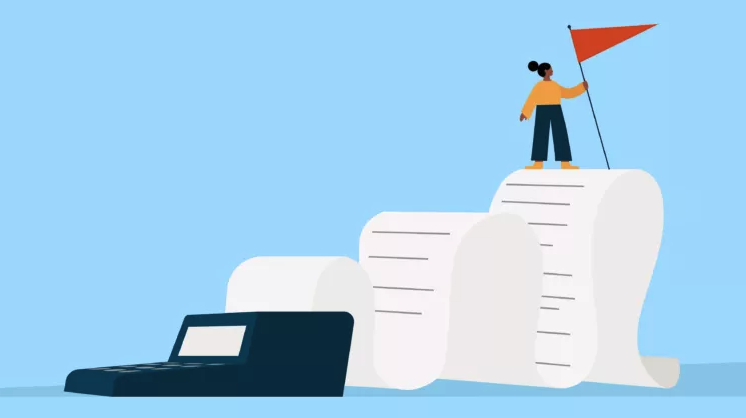Client intake in law firms is the process of onboarding new clients. It also includes acquiring the personal information that is needed to open their legal cases. The client intake process can be an incredibly time-consuming exercise for solo and small firm solicitors. Usually, it’s also a non-billable one.
Whether you’re just starting your own firm or you own an established practice, a streamlined client intake is key for making a good first impression on clients and keeping your practice running efficiently.
Here’s everything you need to know about creating a strong client intake process for your law firm. This guide includes an overview of the client intake stages, some best practices, and thoughts about online and automated client intake processes.
Free download: Client Onboarding Checklist
Overview of the client onboarding process
Client onboarding is more than just getting potential new clients to fill out an intake form. It’s an entire process of attracting and hiring new clients. This goes from their first interaction with your firm to the moment they sign an engagement letter. Arguably, client intake also involves onboarding new clients after they’ve signed on with your law firm.
The onboarding process can be divided into several stages:
- Attracting a new potential client. Clients might find you through a friend, by coming across your website when searching for information related to their legal issue, or by searching for a law firm in their city or town.
- Capturing contact information. Make it easy for potential clients to share their contact information with you. This is key to moving them toward becoming a client.
- Pre-screening. Before you book an initial consultation, save time by asking for enough information to determine whether a given client is a fit for your firm from the get-go.
- Conflict checking. Make sure there’s no reason you can’t work for a potential client.
- Scheduling and holding an initial consultation. Allow clients to book meetings with you via a tool like Clio Scheduler.
- Collecting key information via an intake questionnaire. Ask clients to provide key information you’ll need for their case.
- Creating a fee agreement—and getting it signed. With the right tools, you can generate this form automatically from information in the client’s intake questionnaire.
- New client onboarding. Send clients information on when to expect bills and in what format, how to pay bills, and when you’re available. This will help set expectations and lead to a smoother experience for all involved.
By paying close attention to your law firm’s overall client intake process, you can find opportunities to streamline individual elements of client intake—for a better experience for your clients and a lighter workload for your firm. For example, if you’re currently using paper intake forms, you may want to consider switching to an online version that clients can fill out in the comfort of their homes. More on that later.
Discover more about client onboarding with our downloadable Client Onboarding Checklist, where you’ll be able to deliver an intake experience that doesn’t just make sense for your firm—but one that is smooth and straightforward for your clients.
Client intake best practices
Lawyer-client relationships are extremely important, so it’s important to start them off right. During the client intake process, show that you’re listening to your future clients. This shows that you’re engaged with their issues, while also making the process as simple as possible for them.
A good client intake process should be:
- Straightforward for your client
- Efficient for your staff
- Organised for all involved
- Personalised to show you care
Read on for other best practices to follow for client intake:
1. Document your client intake policies and processes
How should your staff handle calls or emails from prospective clients? Who schedules consultations? Where can client intake forms be found? What happens when a potential client visits your office? Most answers to these questions are common sense, but it’s still a good idea to clarify expectations for lawyers and staff.
2. Conduct a thoughtful pre-screen
The easiest way to waste time on client intake is to spend time onboarding clients that you know won’t be a good fit. Lawyers love to help, but not every problem or person is a match for your practice area, workload, or firm size, and it’s OK to say no to those who would be better served elsewhere.
To pre-screen clients, try setting up a short phone call to assess the matter at hand. What is the person hoping you can help with? Have they worked with a lawyer before?
If you decide the client isn’t a good fit after this initial call, refer them to another solicitor in your network or to a website or organisation that may be able to give them the information they’re looking for. Even though you’re not taking this person on as a client, they’ll still remember your help—and will be more likely to refer you to friends or family who could actually be a good fit for your firm.
Ensure scheduling these calls is simple for both you and your prospective clients. For example, David Turney, managing partner at Avery Law LLP, clearly shows potential clients where to go on the firm’s home page with a “Book Online Consultation” button.

This takes visitors to a page where they can schedule a call or request an in-person meeting based on David’s availability. Avery Law uses Clio Scheduler for this.

Avery Law also has a contact form, giving clients multiple ways to get in touch. Their comprehensive intake process makes life easy for prospective clients and ensures the firm receives as many enquiries as possible.
3. Listen, listen, listen during your initial consult
Listen to your client and be emotionally sensitive during your initial consultation or phone call. Often, people come to lawyers for help facing extremely difficult life challenges (even if it’s a business matter, there’s likely some level of emotion or stress involved), and making a prospective client feel comfortable from the start could help them choose to work with you.
4. Take time to discuss fees
When you conduct your initial consultation, leave time to discuss your billing process, accepted methods of payment (e.g., cheque or debit and credit card), and all things payment related. This is key for setting expectations and ensuring that your client can pay for your services in a way that works for both them and your firm. Don’t hesitate to discuss alternative billing methods—for example, if you bill fixed fees instead of hourly.
5. Integrate with your practice management software
Duplicate data entry is time-consuming and leaves room for error—this is not a good situation for law firms dealing with a myriad of data fields during the client intake process.
Luckily, there’s a simple solution for this: set up your client intake process so that all information is inputted or imported directly into your practice management software.
For example, David creates new contacts and matters in Clio Grow before pushing this information from his client intake forms in Clio Grow to Clio Manage. Avery Law benefits from Clio Suite’s end-to-end solution which allows them to use Clio Grow and Clio Manage together; Clio Grow is their client intake software, and Clio Manage handles everything related to law practice management.
6. Track potential clients by their stage in the client intake process
Don’t let potential clients fall through the cracks: break your client intake process into well-defined stages, such as “not yet contacted”, “needs follow-up”, or “intake form pending,” for a clear picture of which clients you need to take action on—and what needs to happen.
7. Automate engagement agreements
With document automation software, you can create standardised templates to encompass a variety of different situations and matter types, and then use software to auto-populate the appropriate data into these templates.
8. Offer e-signatures
When it comes to bringing on new clients, your goal should always be to minimise barriers. One of the best ways to streamline your intake process is to offer e-signatures on fee agreements and other documents.
9. Never stop improving
Whatever improvements you make, it’s important to keep in mind that your client intake process will never be perfect. Reevaluate your process on a regular cadence (e.g., every six months) to see if there are opportunities to make your process more efficient or improve the experience for potential clients.
You may like these posts
Why firms are moving to online client intake
Traditionally, client intake involves having new law firm clients fill out a paper form. A staff member then painstakingly types this out. In the digital age, there’s no need to struggle with printing, scanning, or photocopying client intake forms. Solutions like Google Forms can help take your client intake process online, removing the potential for lost pieces of paper and eliminating the need for duplicate data entry.
With online client intake tools and forms, you can streamline your firm’s client intake process while reducing the risk of error.
Here are a few other benefits of moving your client intake online:
1. Improved organisation and workflow
Most firms still use manual, disjointed processes for intake: jotting down notes by hand; logging data in MS Office or Google Docs; sending out PDFs for clients to print, fill out, scan and send back; etc.
An online intake solution helps you stay organised and cuts down the time you spend working on trivial intake tasks—allowing you to focus most of your energy on the legal work you’re actually paid for.
For example, Clio Grow includes a CRM for keeping up-to-date on the status of potential clients and insight into where potential clients are coming from.
Using these tools, you can create a systematic workflow for managing your prospects. You can intake new matters, and then seamlessly push the data over to Clio as soon as a matter goes from “pending” to “hired.” All you have to do is get to work!
2. Reduced data entry
Nobody likes data entry. It’s boring, frustrating, and time-consuming. Whether you do it yourself or pay somebody to do it, the end result is always a fruitless expenditure of time and money.
The beauty of using online forms to conduct your intake process—as opposed to Word documents or handwritten notes—is that your clients do much of the data entry for you.
When you send out an online form and the client submits it, that data can then be exported to Clio to automatically create a contact with the appropriate information. Even if it’s just for contact details, you’ll save up to five minutes on every single contact you create.
3. Better client experience
With the millennial generation reaching the age where they are the primary decision-makers in homes and businesses, consumer expectations and behaviours are changing rapidly.
We spend more time with our smartphones than our spouses. It is known that we now communicate through mobile messaging and social media apps. We use mobile devices to check our email (85% of the time) and access social media (68.6% of the time). Above all, we expect everything to be incredibly easy and user-friendly.
The last thing we want to do is fill something out by hand, or….(gasp)…print something out!
By allowing clients to fill out forms online (even from their beloved mobile devices) you are making life easy, not only for yourself, but—most importantly—for your clients.
It’s just good customer service—and when you’re in a service industry, you know that good service is the key to customer satisfaction, repeat business, and more referrals.
4. Better data tracking and analytics
Finally, solicitors should be most excited about data. Most law firms do a very lackluster job of utilising data to make better decisions. But, as downward price pressure continues and the market becomes increasingly competitive, leveraging data is becoming a necessity.
When you use software to manage business processes, data is an inevitable byproduct. But, unlike using Excel or other programs which require manual data manipulation, the analytics layer can be built straight into the product.
Powerful analytics are built directly into the Clio Grow dashboard to help you track important business metrics for your law firm. This includes things like where your leads are coming from, how effectively you are converting prospects into clients, and which types of matters have the highest dollar value.
The best part? It all happens automatically. You don’t have to do much to access these analytics. You’ll just input some data points about each client and matter during the intake process.
Automating your client intake process
According to the Legal Trends Report, lawyers spend less than 3 hours on average on billable work.
Automation can help. With the right setup, you can take your online client intake to the next level. You will easily bring on new clients in a fraction of the time. And, there will be less data entry—and less risk of error.
There are a number of ways to automate your client intake procedures. For example, you could use tools like WordPress to sync contact information from your website into Clio Grow, or use Mailchimp to sync this information from Clio Grow over to custom audience lists in MailChimp.
Meanwhile, end-to-end solutions for client intake allow you to automatically generate online forms, create appointments, receive documents, and more. (Bonus: Clio Grow integrates directly with some of the tools listed above for an even more flexible process!)
Whatever you choose, it’s worth exploring options for automating client intake. The time savings from the removal of extraneous data entry alone will be worth it!
Learn more about ways to automate client intake.
Conclusion
A small investment in client intake can mean a big improvement for your firm. Consider the case of Ubique Legal, a seven-staff law firm specialising in real estate, landlords, and property law.
Just a few changes to their client intake system allowed them to convert 50% more clients while eliminating time-consuming duplicate work.
Time is money, and time spent on non-billable tasks like client intake means less time helping clients and focusing on billable work. Use the tips in this guide to improve the procedures at your firm:
- Automate where you can… In the digital age, there’s no need to take on all the work of client intake yourself. Look for tools to help lighten the load.
- … But don’t forget a human touch. You only get one chance to make a first impression, and your firm’s client intake process is that chance. Your process should be simple and efficient, but your client should still be able to see that you care about meeting their needs.
- Always be improving. A client intake process is never perfect, so seek feedback from clients. Also, be on the lookout for tools and new ideas to make your procedures more efficient.
Investing in your client intake process means more than just adding operational efficiencies for your practice. You’ll serve your clients better, enhance your reputation, and drive more referrals to your firm.
We published this blog post in July 2023. Last updated: .
Categorized in: Business
Explore AI insights in our latest report
Our latest Legal Trends Report explores the shifting attitudes toward AI in the legal profession and the opportunities it brings for law firm billing, marketing, and more.
Read the report






